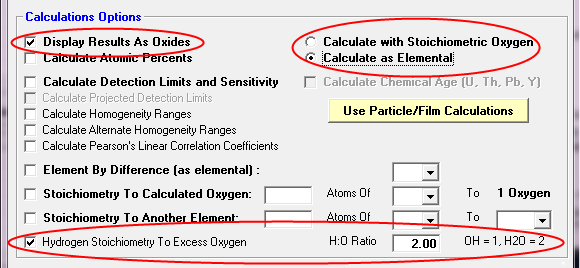Ben,
Here is a paper published a few years back regarding an approach to quantitative analysis of a beam sensitive mineral.
Ed Vicenzi
Edit by John: Ed is too modest. It was his idea to implement a method for calculating excess oxygen as H2O/OH in PFE.
The idea is simply to measure all your cation elements plus oxygen (which is a whole other topic that we can go into another time), and then calculate your stoichiometric oxygen using the Display Results As Oxides checkbox seen here (assuming your cation valences are sufficiently known).

The program will take your measured oxygen and subtract from it the calculated oxygen, based on the specified cation formulas in the Elements/Cations dialog, to obtain the actual excess (or deficit!) oxygen.
Then using the Hydrogen Stoichiometry To Excess Oxygen feature, specify the H to O ratio and let 'er rip!